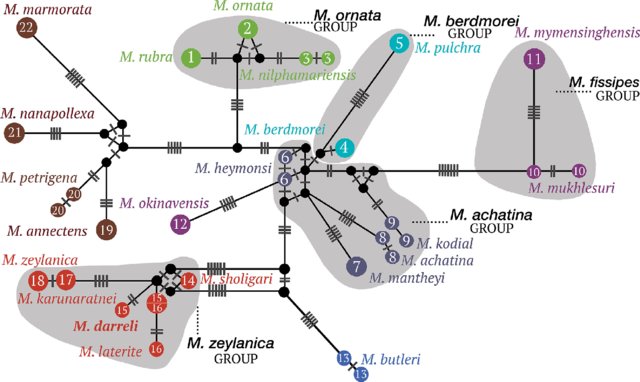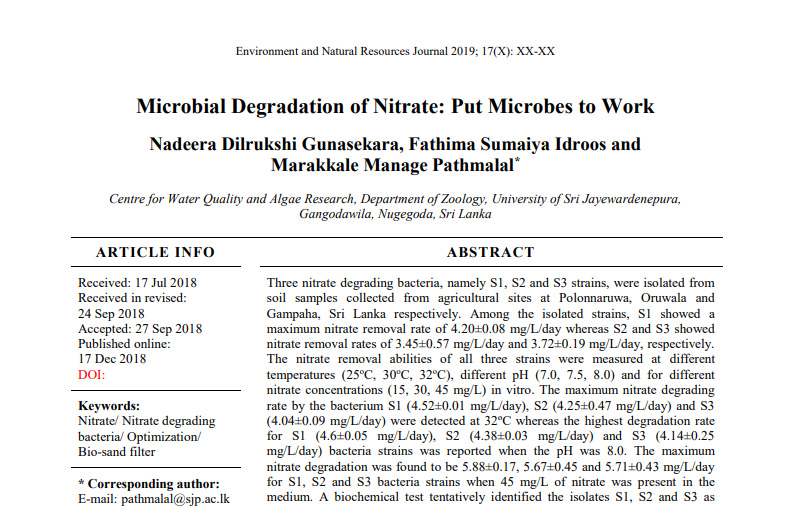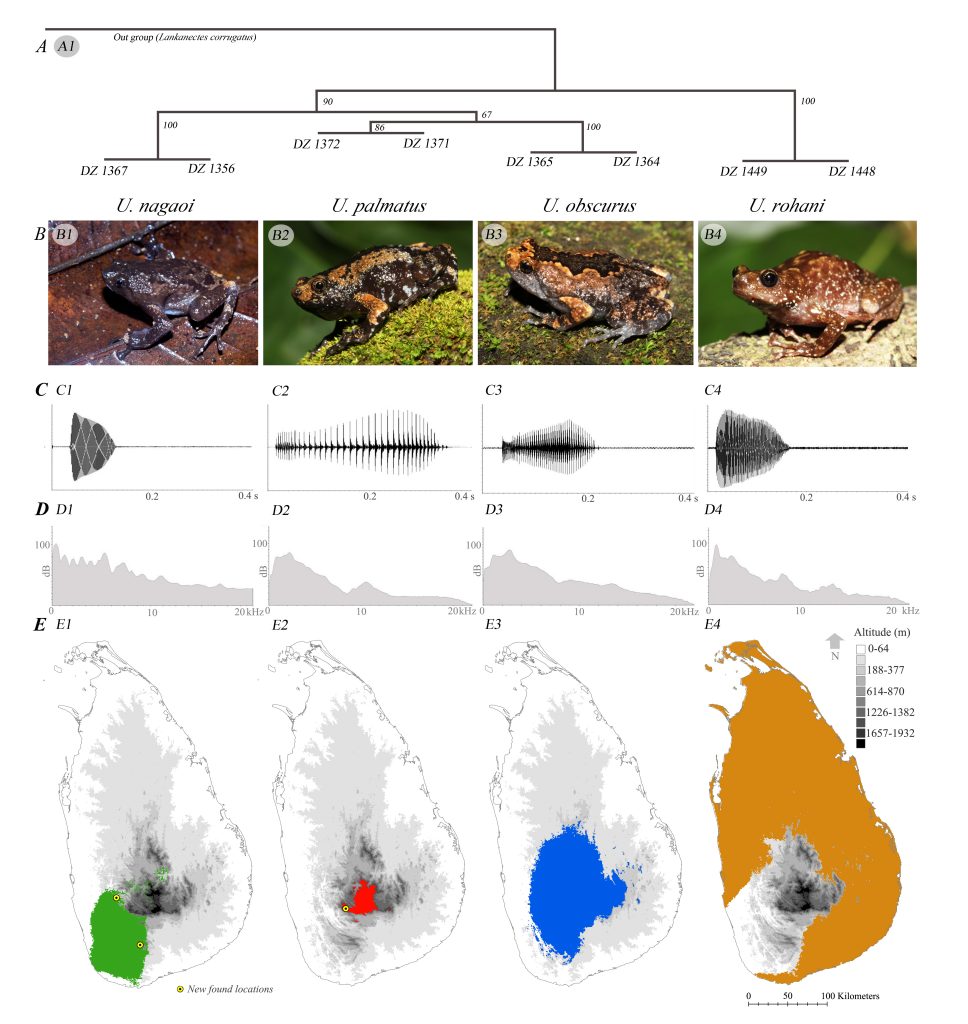Authors: Sonali Garg, Robin Suyesh, Abhijit Das, JiaTang Li, Nayana Wijayathilaka, A. A. Thasun Amarasinghe, Farits Alhadi, Kumar K Vineeth, N.A. Aravind, Gayani Senevirathne, Madhava Meegaskumbura, SD Biju.
Journal: Vertebrate Zoology
This study presents a systematic revision of South Asian members of the taxonomically challenging genus Microhyla Tschudi, 1838. Species relationships and diagnostic characters are determined by integrating molecular, morphological, and acoustic approaches, through which we also recognize six groups of closely related species. In addition, a new species from the southern Western Ghats of India is formally described as Microhyla darreli sp. nov. Species accounts of all the 16 recognized members from South Asia include current taxonomic status, metric and meristic characters, divergence in mitochondrial DNA, phylogenetic relationships, acoustic characters, revised geographical distributions, and natural history notes.
Read the story here




